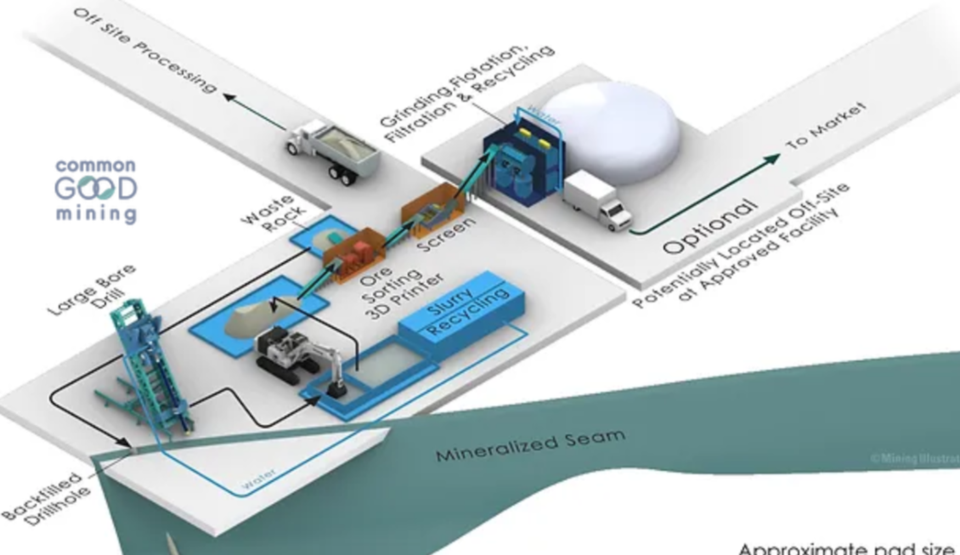Canada has an abundance of small, high-grade mineral deposits. There just doesn’t seem to be much of an appetite by the mining industry to tap into them.
Small deposits are being overlooked, said a report prepared by B.C.-based Common Good Mining, because of the perception that they’re not economic due to assumed high costs, and lack of infrastructure or technology to put them into production.
But small-scale mining is a business model that’s worth exploring, (said the report), especially if Canada requires more critical minerals to feed the green-tech revolution.
Common Good Mining has a stable of nickel, copper and zinc projects in southwest B.C. and is taking a modular mining approach with its high-grade properties. This report was released through MICA, a mining innovation group in Sudbury.
Canada hosts 31 metals that are designated as strategic critical metals, particularly lithium, nickel, graphite, rare elements, cobalt, manganese, phosphate and copper.
When it comes to bringing new deposits online, Canada’s mining sector always thinks big. That’s the traditional approach of large-scale operations, built on the model of economies of scale where fixed costs can be reduced by spreading them over large production amounts for decades.
But, on average, it takes 17 years to put a discovery into production. And less than one per cent of these discoveries ever becomes a mine.
Common Good’s report says these huge operations tend to leave a large physical environmental and socioeconomic “footprint.”
And there are a slew of hurdles to bring new mines into production with high inflationary costs, supply chain issues and traceability, the overall complexities and risks involved in these projects, and the increasing focus on environment, social and governance, known as ESG.
Developing large-scale mines involves expensive studies and complex permitting processes well before a tonne of ore is mined and any revenues are generated.
An arduous and lengthy development timeline is not good at the time when there’s an unprecedented global demand for critical minerals.
In proposing small-scale mining as a solution and a business model for all sizes of deposits, Common Good Mining said a changing technology landscape can turn these small, uneconomic deposits into viable ones.
In the report, small-scale mining is defined as operations with a short mine life; annual ore production of less than 125,000 tonnes; minimal labour requirements; modular, flexible mining equipment with low capital costs; small environmental impact; early returns on investment; and minimal reclamation costs. Historically, there have been small mines in pockets across Canada.
Northwest Territories and Newfoundland-Labrador have legislative provisions for small operations. The Yukon Territory provides examples of small-scale placer gold operations, some being Indigenous-led ventures, others mined by families over the generations.
But these mines are uncommon in Canada.
In Central and South America, there are examples of small-scale operations mining copper, zinc, lead silver and gold mines.
They are supported by off-the-shelf, modular, adaptable and scalable technologies that can support a new business model and enable small-scale mining within a smaller environmental footprint.
For instance, the report says Canada’s Sepro Systems, a global supplier of modular mineral processing solutions, employs a distribution model in South America to meet demand for processing equipment.
In making the case for small mines, the paper says starting small could lead to bigger discoveries later on as the knowledge of the mineral system improves and the operation can be scaled up. Mining proponents become better acquainted with the ore body, geometry and mineralogy, which helps gain greater efficiencies with the metallurgical flow sheet, and company get a better handle of the social outcomes and environmental impacts.
In developing large deposits, reducing the size, scale and scope of an early-stage operations generates upfront cash flow, reduces the risk in shortening the timelines to get a mine into production, and provide more opportunities for Indigenous communities and other rights-holders to have their say and grant consent.
Starting small provides opportunities for better consultation and participation by Indigenous partners and communities, less capital and potentially less time to receive government regulatory approvals.




